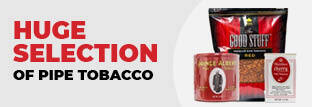About Smoking Cessation Products
What To Know About Smoking Cessation Products
Understanding how smoking cessation products work—and what side effects they may cause—can help you determine which product may be best for you.
If you’re considering one of these products, reading labels and talking to your pharmacist and other health care providers are good first steps to take.
You also can check the FDA’s website for more information on each product at Drugs@FDA, where you can search for each product by name.
And remember to weigh each product’s benefits and risks, among other considerations.
About Nicotine Replacement Therapy (NRT)
Nicotine is the substance primarily responsible for causing addiction to tobacco products. Tobacco users who are addicted to nicotine are used to having nicotine in their bodies.
As you try to quit smoking, you may have symptoms of nicotine withdrawal. When you quit, this withdrawal may cause symptoms like cravings, or urges, to smoke; depression; trouble sleeping; irritability; anxiety; and increased appetite.
Nicotine withdrawal can discourage some smokers from continuing with a quit attempt. But the FDA has approved several smoking cessation products designed to help users gradually withdraw from smoking (that is, “wean” themselves from smoking) by using specific amounts of nicotine that decrease over time. This type of product is called a “nicotine replacement therapy” or NRT. It supplies nicotine in controlled amounts while sparing you from other chemicals found in tobacco products.
NRTs are available over the counter and by prescription. You should generally use them only for a short time to help you manage nicotine cravings and withdrawal. However, the FDA recognizes that some people may need to use these products longer to stay smoke-free. Talk to your health care provider to determine the best course of treatment for you.
Over-the-counter NRTs are approved for sale to people age 18 and older. They are available under various brand names and sometimes as generic products. They include:
- Skin patches (also called “transdermal nicotine patches”). These patches are placed on the skin, similar to how you would apply an adhesive bandage.
- Chewing gum (also called “nicotine gum”). This gum must be chewed according to the labeled instructions to be effective.
- Lozenges (also called “nicotine lozenges”). You use these products by dissolving them in your mouth.
For over-the-counter products, it’s important to follow the instructions on the Drug Facts Label (DFL) and to read the enclosed User’s Guide for complete directions and other important information. Ask your health care provider if you have questions.
Currently, prescription nicotine replacement therapy is available only under the brand name Nicotrol, and is available both as a nasal spray and an oral inhaler. The products are FDA-approved only for use by adults.
If you are under age 18 and want to quit smoking, talk to a health care professional about whether you should use nicotine replacement therapies.
Important Advice for People Considering Nicotine Replacement Therapy
Women who are pregnant or breastfeeding should talk to their health care providers and use nicotine replacement products only if the health care providers approve.
Also talk to your health care provider before using these products if you have:
- diabetes, heart disease, asthma, or stomach ulcers;
- had a recent heart attack;
- high blood pressure that is not controlled with medicine;
- a history of irregular heartbeat;
- or been prescribed medication to help you quit smoking.
If you take prescription medication for depression or asthma, tell your health care provider if you are quitting smoking because he or she may need to change your prescription dose.
Stop using a nicotine replacement product and call your health care professional if you have any of the following symptoms:
- nausea;
- dizziness;
- weakness;
- vomiting;
- fast or irregular heartbeat;
- mouth problems with the lozenge or gum;
- or redness or swelling of the skin around the patch that does not go away.
Source: FDA




